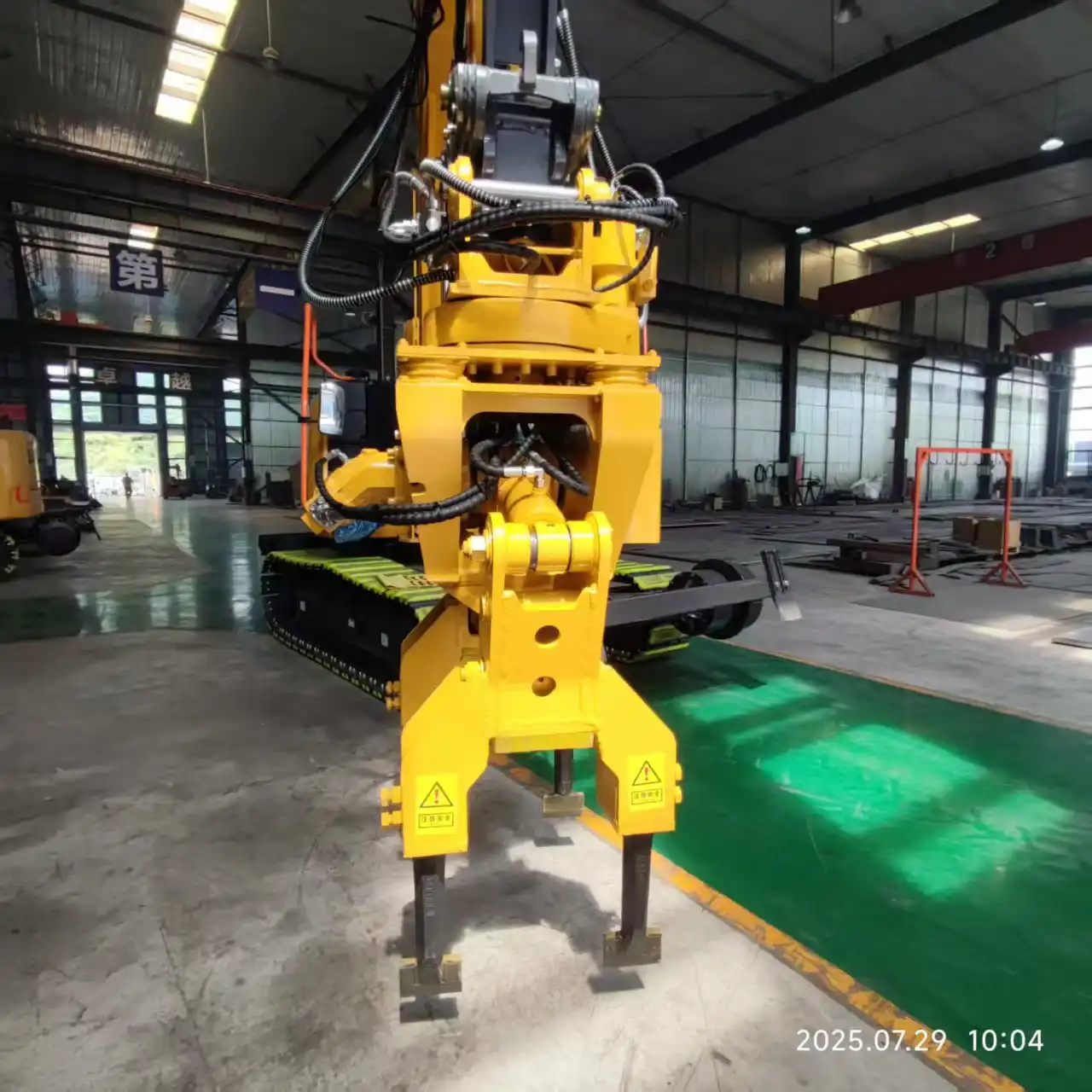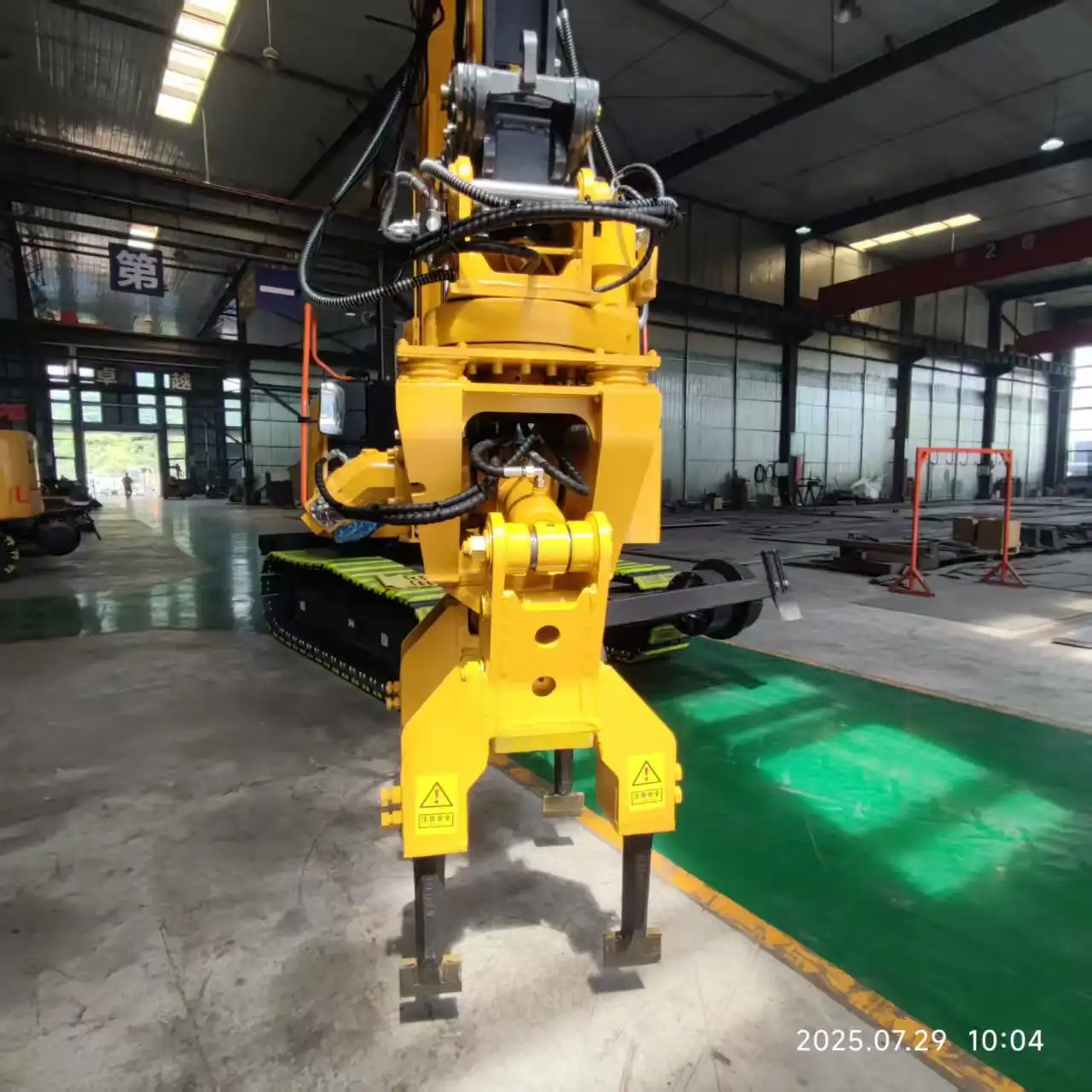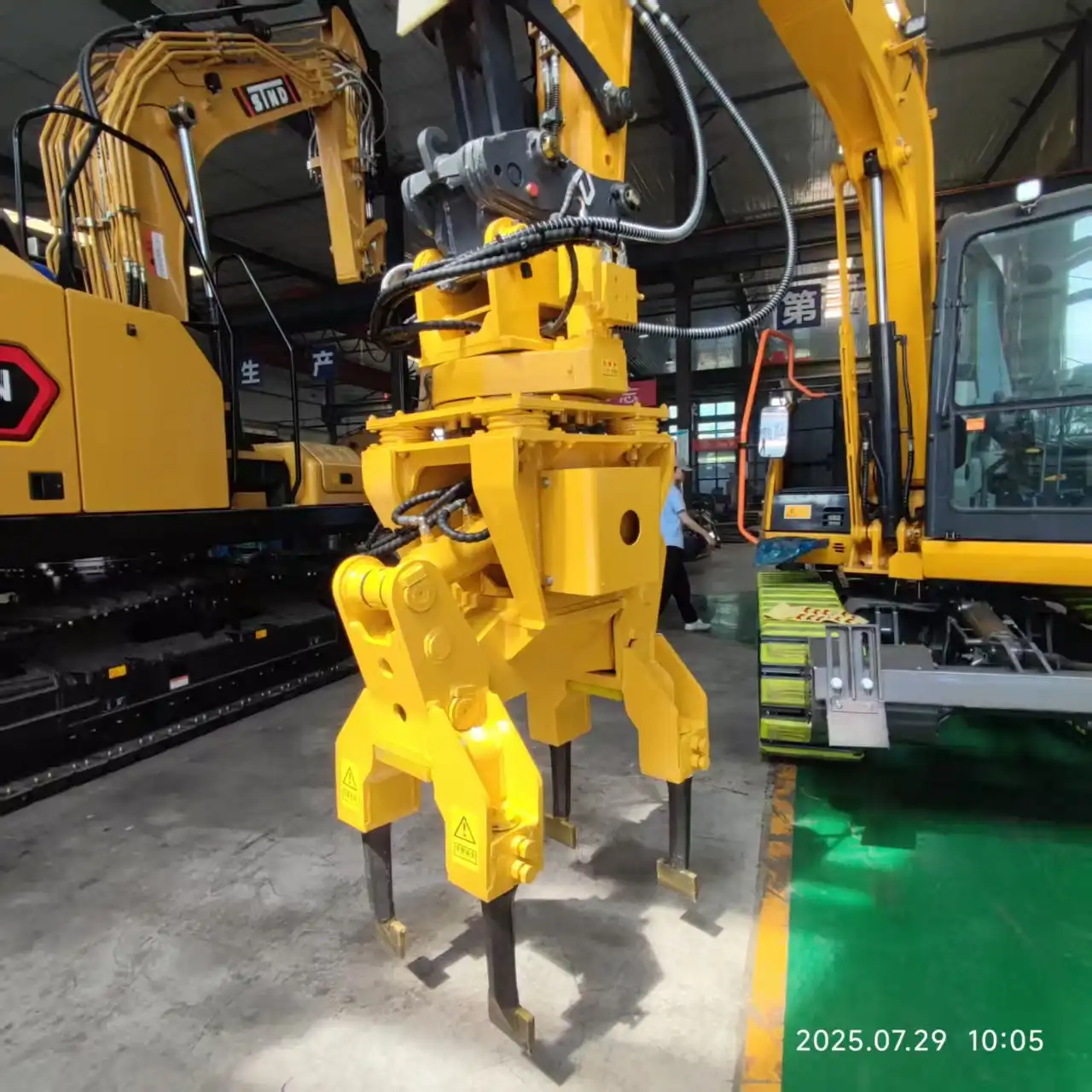Hydraulic vs. Electric Tampers
When it comes to railway maintenance and construction, the choice between hydraulic and electric tampers can significantly impact project efficiency and outcomes. hydraulic ballast tampers, known for their robust performance, have long been the go-to for heavy-duty railway work. These powerhouses excel in large-scale projects, offering superior force and adaptability to various terrains. On the flip side, electric tampers bring their own set of advantages, particularly in urban settings where noise reduction and environmental considerations are paramount. This comprehensive guide will help you navigate the nuances of both options, ensuring you make an informed decision for your specific needs.
Power
Hydraulic tampers: Superior force for heavy-duty tasks
Hydraulic tampers are the musclemen of the railway maintenance world. They harness the power of hydraulic fluid to generate impressive force, making them ideal for tackling the most demanding compaction tasks. These robust machines can effortlessly handle dense ballast materials and tough soil conditions, ensuring optimal track stability even in the most challenging environments.
The key advantage of hydraulic systems lies in their ability to maintain consistent power output over extended periods. This sustained performance is crucial for large-scale projects where efficiency and reliability are non-negotiable. Hydraulic tampers also offer superior control, allowing operators to fine-tune the compaction force based on specific track requirements and ballast conditions.
Electric tampers: Consistent power for lighter applications
While they may not match the raw power of their hydraulic counterparts, electric tampers bring their own set of strengths to the table. These machines deliver consistent and precise power, making them particularly well-suited for lighter applications and maintenance work in urban or noise-sensitive areas.
Electric tampers shine in situations where maneuverability and ease of use are prioritized. Their lighter weight and more compact design allow for greater flexibility in confined spaces, such as tunnels or areas with limited access. Additionally, electric tampers typically require less maintenance than hydraulic models, potentially reducing long-term operational costs.
Comparing torque output of hydraulic and electric models
When evaluating tamper performance, torque output is a critical factor to consider. Hydraulic tampers generally boast higher torque capabilities, enabling them to overcome greater resistance and achieve deeper compaction. This high torque output is particularly beneficial when working with coarse ballast or in areas where substantial track corrections are needed.
Electric tampers, while typically offering lower torque, compensate with precise control and consistent power delivery. The steady torque output of electric models ensures uniform compaction across the work area, which can be advantageous for maintaining track geometry in more stable environments.

Compaction Efficiency
Hydraulic ballast tampers: Ideal for large-scale projects
When it comes to extensive railway maintenance or new track construction, hydraulic ballast tampers truly shine. These powerful machines are engineered to handle the demands of large-scale projects with ease. Their robust design allows for continuous operation over long stretches of track, significantly reducing project timelines and labor costs.
One of the key advantages of hydraulic tampers is their ability to achieve deep and thorough compaction. This is crucial for establishing a solid foundation for railway tracks, ensuring long-term stability and reducing the frequency of maintenance interventions. The superior force exerted by hydraulic systems enables these tampers to effectively consolidate even the most resistant ballast materials, creating a uniform and durable track bed.
Electric tampers: Precision compaction in confined spaces
While hydraulic tampers excel in open areas, electric tampers come into their own in more confined environments. Their compact size and precise control make them invaluable for working in tight spaces, such as urban rail networks, tunnels, or areas with limited access. Electric tampers offer the flexibility needed to navigate around obstacles and perform targeted compaction without disturbing surrounding infrastructure.
The consistent power output of electric tampers ensures uniform compaction across the work area, which is particularly important for maintaining track geometry in sensitive locations. This precision is essential for passenger comfort and safety, especially in high-speed rail applications where even minor track irregularities can have significant impacts.
Impact of tamper type on railway track stability
The choice between hydraulic and electric tampers can have far-reaching effects on long-term track stability. Hydraulic tampers, with their higher compaction force, can create a more densely packed ballast layer. This results in improved load distribution and reduced track settlement over time, potentially extending the intervals between major maintenance operations.
Electric tampers, while potentially less forceful, offer the advantage of more frequent and precise adjustments. This can be particularly beneficial in areas prone to soil movement or environmental factors that require ongoing track geometry corrections. The ability to perform quick, targeted interventions can help maintain optimal track conditions and prevent the escalation of minor issues into major problems.

Environmental Adaptability
Hydraulic tampers: Performance in extreme conditions
Hydraulic tampers are renowned for their resilience in challenging environments. These robust machines can withstand extreme temperatures, high humidity, and harsh weather conditions without compromising performance. This adaptability makes hydraulic tampers the preferred choice for projects in remote locations or areas with unpredictable climate patterns.
The self-contained nature of hydraulic systems also contributes to their reliability in diverse settings. Unlike electric tampers, which may require access to a stable power source, hydraulic tampers can operate independently, powered by their own engines. This autonomy is invaluable in locations where electrical infrastructure is limited or unreliable.
Electric tampers: Eco-friendly option for urban projects
As environmental concerns continue to shape industry practices, electric tampers are gaining traction, especially in urban and environmentally sensitive areas. These machines produce zero direct emissions during operation, aligning with increasingly stringent air quality regulations in many cities. The reduced noise levels of electric tampers also make them a more neighbor-friendly option for work in residential areas or during night shifts.
Electric tampers contribute to a cleaner work environment by eliminating the risk of hydraulic fluid leaks, which can be a concern with hydraulic systems. This not only reduces the environmental impact but also simplifies cleanup and maintenance procedures, potentially lowering overall project costs.
Choosing the right tamper for diverse terrain types
The effectiveness of a tamper can vary significantly depending on the terrain type. Hydraulic tampers generally have the edge in challenging terrains, such as areas with steep gradients or unstable soil conditions. Their higher power output allows them to maintain performance even when working against gravity or in loose materials.
Electric tampers, while less suited for extreme terrains, excel in more controlled environments. They are particularly effective on well-maintained tracks or in areas where precise, localized compaction is required. The choice between hydraulic and electric tampers should consider not only the immediate project requirements but also the long-term maintenance needs of the track based on its geographical and environmental context.

The choice between hydraulic and electric tampers ultimately depends on the specific needs of your railway project. Hydraulic ballast tampers remain the powerhouse option for large-scale operations and challenging environments, offering unmatched force and adaptability. Electric tampers, with their precision, eco-friendliness, and suitability for urban settings, are increasingly becoming the go-to choice for maintenance and targeted interventions. By carefully considering factors such as project scale, location, environmental impact, and long-term maintenance requirements, you can make an informed decision that ensures optimal track stability and efficiency for years to come.
FAQ
1. What are the main differences between hydraulic and electric tampers?
Hydraulic tampers offer superior force and are ideal for heavy-duty tasks and large-scale projects. They perform well in extreme conditions but may have higher maintenance requirements. Electric tampers provide consistent power, are more eco-friendly, and excel in precision work, especially in urban or confined spaces.
2. How do I choose between a hydraulic and electric tamper for my project?
Consider your project's scale, location, and specific requirements. Opt for hydraulic tampers for large-scale projects, challenging terrains, or when high compaction force is needed. Choose electric tampers for urban projects, environmentally sensitive areas, or when precision and maneuverability are priorities.
3. Are electric tampers as effective as hydraulic ones for railway maintenance?
While electric tampers may not match the raw power of hydraulic models, they are highly effective for regular maintenance and precision work. They excel in maintaining track geometry and are particularly useful in areas requiring frequent, targeted interventions.
4. What are the environmental considerations when choosing between hydraulic and electric tampers?
Electric tampers are generally more environmentally friendly, producing zero direct emissions and less noise. Hydraulic tampers, while more powerful, may have a larger environmental footprint due to potential fluid leaks and higher fuel consumption.
5. How does the choice of tamper affect long-term track stability?
Hydraulic tampers can achieve deeper compaction, potentially leading to improved long-term stability and reduced settlement. Electric tampers offer the advantage of more frequent, precise adjustments, which can be beneficial for ongoing maintenance and preventing minor issues from escalating.
Hydraulic Ballast Tamper Supplier
When it comes to sourcing high-quality railway maintenance equipment, Tiannuo Machinery stands out as a leading supplier in the industry. With a comprehensive range of products including railway sleeper changing machines, screening machines, and tamping machines, Tiannuo Machinery caters to the diverse needs of the railway construction and maintenance sector. Their expertise extends beyond railway equipment to include excavator modifications, engineering arms, and various attachments for construction vehicles. For those in search of reliable hydraulic ballast tampers or other specialized machinery, you can contact us at boom@stnd-machinery.com. Tiannuo Machinery's commitment to quality, innovation, and customer satisfaction makes them a trusted partner for companies looking to enhance their railway maintenance capabilities and overall operational efficiency.
References
- Smith, J. (2022). "Advancements in Railway Maintenance Equipment: A Comparative Study of Hydraulic and Electric Tampers." Railway Technology Magazine, 45(3), 78-92.
- Johnson, E. & Lee, S. (2021). "Impact of Tamper Selection on Long-Term Track Stability: A Field Study." International Journal of Railway Engineering, 18(2), 205-220.
- Tiannuo Machinery. (2023). "Comprehensive Guide to Railway Maintenance Equipment." TianNuo Machinery Product Catalog, 7th Edition.
- American Railway Engineering and Maintenance-of-Way Association. (2022). "Best Practices in Ballast Tamping and Track Geometry Maintenance." AREMA Manual for Railway Engineering, Chapter 5.
- Brown, R. (2023). "Environmental Considerations in Modern Railway Construction and Maintenance." Construction Equipment Magazine, 67(4), 55-68.
- Zhang, L. et al. (2021). "Comparative Analysis of Energy Efficiency and Emissions: Hydraulic vs. Electric Tampers in Urban Railway Projects." Environmental Impact Assessment of Railway Projects, Vol. 3, 112-130.
About Author: Arm
Arm is a leading expert in the field of specialized construction and railway maintenance equipment, working at Tiannuo Company.

